Gene Colan: Comics "Iron Man" — The Complete Interview
Aug 10, 2010
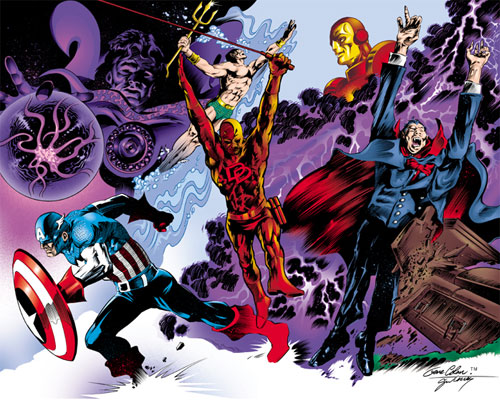
|
With a career spanning seven decades Gene Colan has seen it all and drawn most of it. Going from Timely to Marvel, DC to Dark Horse and Tomb of Dracula to Rob Zombie, Gene Colan is one of the true legends of the world of comics, and he was kind enough to sit down and share a bit of that experience with PREVIEWS. This is the full interview.
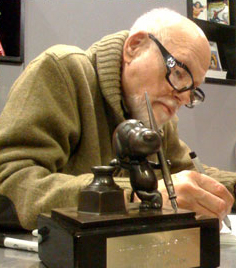 PREVIEWS: How did you get your first job at Timely (which would become Marvel)?
PREVIEWS: How did you get your first job at Timely (which would become Marvel)?
Gene Colan (G): I walked in cold off the street. I went to The Art Students League of New York before I was in the service and after and I decided to work up some samples. One was a war story and I put everything I had into it. I even lettered it. It was a wash drawing, two or three pages and a few other things. I met the guy who saw newcomers coming through the door, his name was Al Sulman, he looked my work over and said, “Can you wait about five or ten minutes.” I said sure. When they tell you to wait, that means their interested. Maybe fifteen minutes later they asked me to come in and that clinched it for me. They don’t ask you to come in and say let’s talk about the weather!
It was lunch, a hot summer day and Stan Lee was playing cards, he had a beanie cap on with a propeller on top, the window was open and that little propeller was swirling around and he was the head of the art department! He looked at me, and I was just a kid as green as grass, and says, “Do you want to be an artist and work for Marvel? Sit down.” It was called Timely then and I knew he was goofing around with me but that’s how I got the job. I got a page rate and they told me to come in. I had to punch a time clock like everyone else, punch in at nine AM, punch it again around five-thirty and do it again five days a week.
PREVIEWS: Do you think anyone at Marvel today is wearing a propeller beanie?
G: No! But Stan was a very fun loving guy. He’d get up on a desk like some superhero and get into a pose. His desk was a stage and he’d show an artist just what he meant. If he thought it would dazzle the readers he would do that. I don’t know of any other editors that would but he would. He was natural under any circumstances. I like Stan a lot. We keep in touch.
 PREVIEWS: Considering all of the legendary writers you’ve worked with, who were the easiest?
PREVIEWS: Considering all of the legendary writers you’ve worked with, who were the easiest?
G: The easiest was Marv Wolfman. We had a good rapport.
I would call him if there was something that I thought should be in but maybe it would not be appropriate or something. I’d talk it over with him and we got along good that way.
He was very easy going, but I didn’t want to go beyond what he had written. There may be things I did not want to put in, so I would call and see how important it was to keep it in. It was easy.
The same situation with Stan (Lee), very easy going guy, but he was a little more definite about what he wanted being in charge of Marvel and running everything there.
But Stan to me was wonderful, just a big kid.
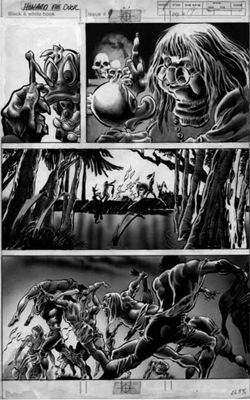 PREVIEWS: What was a big challenge for you?
PREVIEWS: What was a big challenge for you?
G: Steve Gerber wrote a very funny Howard the Duck. I couldn’t get past a page of that without laughing my head off. He was really good, but was not as easy going, at least not with me. Easy enough, but when we did the syndicated strip is when it became difficult. It all fell apart within a few months. I wanted to work at Marvel at the same time and I didn’t know at the time but working on a syndicated strip is like slave labor. You might as well have a ball and chain on your desk. It was around the clock, seven days a week with the Sunday pages. You had no life for yourself. On the good side you had a check. You were employed and you had money coming in but no life. I could see the hand writing on the wall with it. I couldn’t handle both that and Marvel so I let the strip go.
PREVIEWS: Where did you draw your inspiration?
G: Most of my inspiration came from film. Growing up in the late thirties into the early forties the films were black and white. I think The Wizard of Oz had come out it must have been 1939 when color came out and it was beautiful. I remember going to the theater in Manhattan and the theater had klieg lights advertising Gone with the Wind and it was a big deal! But most of my inspiration came from detective stories and war stories.
There was a great war film called Guadalcanal Diary. A lot of inspiration came from that movie, and I loved doing it because it was action and I sort of made believe and played a game with myself where I was directing and producing a film. I got to be the person who picked the characters to play the part, the lighting expert and so on. I enjoyed it. The motion picture screen became my panel. That I learned about composition. I learned about continuity. It’s not just being able to draw when you’re in this business. Certainly you have to be a fairly decent artist, and then you have to be able to tell a story.
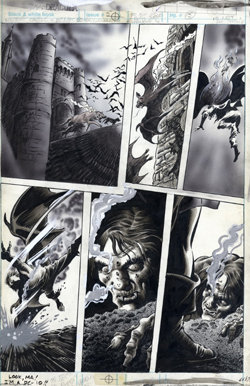 PREVIEWS: What was it about Tomb of Dracula that made it so special?
PREVIEWS: What was it about Tomb of Dracula that made it so special?
G: Not known by Stan I decided to try out on my own for that privilege and I knew I could do a hell of job. I worked on a page of my own and handed it to Stan looked at it and almost immediately called me on the phone and said it’s yours. Eight … nine years later I was still doing it.
I threw myself into it totally. I thought of the readers and what I could do to scare the hell out of them and I think I did, or I hope I did. But holding on to it that long had to mean something and I held onto it even after Stan left Marvel. Even Buffy the Vampire, it’s always the same approach. I make it as realistic as possible, and throw myself into it.
PREVIEWS: Who did you look up to as a young artist?
G: Milton Caniff, Terry and the Pirates, he was the one that inspired me the most. His uses of black, his shadow work. He used heavy blacks in the folds of the clothes. His room interiors, his exteriors I just loved his work. I never met him. The closest I ever came I saw a picture of him in the news paper and I’d imagined him not anything at all like the way he was. I pictured him like Terry.
PREVIEWS: What question do you usually get from young comic artists and what’s your answer?
G: How do I get started, who do I see. Typical stuff I would have asked, but it’s a long and a lonely road you have to go down and develop yourself. You can be talented but it takes practice and learning story. More than anything you have to love it, really love it and that goes for anything. If you’re a writer you have to love to write. Musicians, composers, they’re all that way; they can’t get away from what they were born to do. There’s a film called The Last Angry Man with Paul Muni as real dyed-in-the-wool doctor a Brooklyn doctor. And he treats people for nothing, he loves it. He’s got a friend who works on Park Avenue and is raking it in. He’s got a machine that does absolutely nothing and it winks and it blinks… red lights green lights… and they think he’s the whole Mayo Clinic. It’s a real tear jerker ’cause Paul Muni is dying and his friend says, ‘Look at you, I know nothing, it’s all bluff. But you’re everything.’ It’s very sad but it’s kind of true to life. There’s a message in that. Read between the lines and you’ll know that money isn’t everything. There’s a certain humanity that’s needed to get by in this world and if you don’t have it, it’s not good. You have to have it and act it. That’s the message I got.
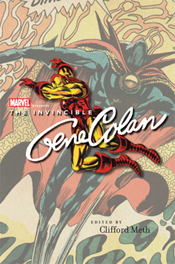 For me, it’s always been a love affair with the art form.
For me, it’s always been a love affair with the art form.
PREVIEWS: Would you like to say anything about The Hero Initiative?
G: Comic book artists are notorious for not being good business people, myself included.
We just wanted to keep getting the scripts, to keep the work flowing and try to keep the waterline in a safe place so we wouldn’t drown.
We didn’t know how to defend ourselves as to what our rights were.
We’d draw anything you wanted us to draw and didn’t think beyond that. The Hero Initiative has been wonderful to me — great people who help a lot.
**********
This month The Hero Initiative offers their Gene Colan retrospective, The Invincible Gene Colan with original art by Gene the Dean himself and commentary and analysis from Stan Lee, Roy Thomas, John Romita Sr., Walter Simonson, Neil Gaiman, Tom Spurgeon and more! Look for the Staff Pick review here on PREVIEWSworld!
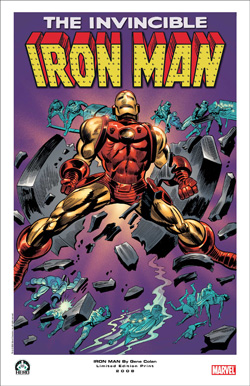
|
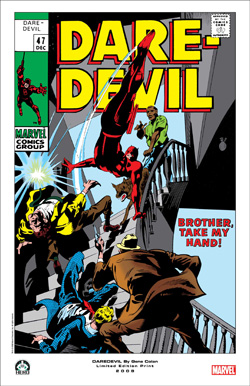
|




